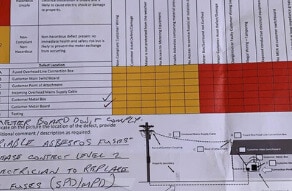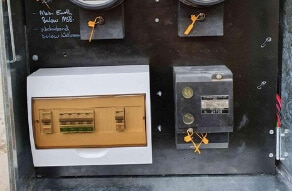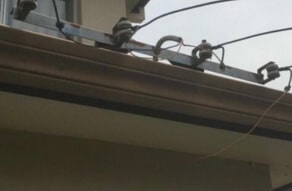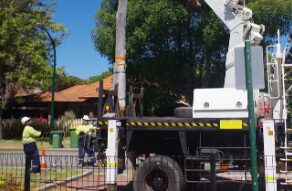Call us now
0439 823 190What Are Point Of Attachment Defects?
Posted on January 13, 2020
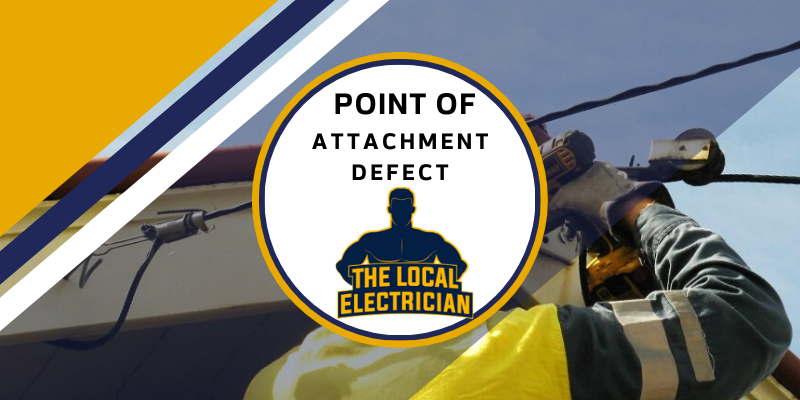
There are some days when you just know that your home’s electrical systems are off. But when you check for problems there doesn’t seem to be anything wrong. In the end, you simply brush it off as minor damage that you could get fixed some other time. However, this might be a sure sign that there’s something wrong further within your electrical system that could potentially cause serious damages. As a specialist level 2 electrician at The Local Electrician, we are qualified to resolve any point of attachment defects by connecting single and 3 phase electrical equipment.

If the issue is major and noticeable, you will eventually receive an electrical defect notice. These usually arrive at the most unexpected times and will require a certified level 2 electrician to resolve the issue within 21-30 days. A point of attachment (POA) issue is a common reason for receiving an electrical defect notice. This means that the power connection supplying your home’s electricity has an issue. For this reason, inspections are made regularly by Ausgrid, Endeavour and Essential Energy technicians. If this notice gets delivered to you, know that this means your electrical system needs to get checked and updated immediately before the power supply to your home is turned off.
Where Is My Property’s Point Of Attachment?
While some people understand what this means, others cannot seem to figure out why they receive this notice. Typically, this is because they cannot find the problem in their electrical system. To find your home’s point of attachment, simply follow the overhead electrical wires and look at where they connect to your property. It is most common for the POA to be located at the edge of your property’s roof. It is important that you do not touch the point of attachment, as they can potentially be very dangerous.
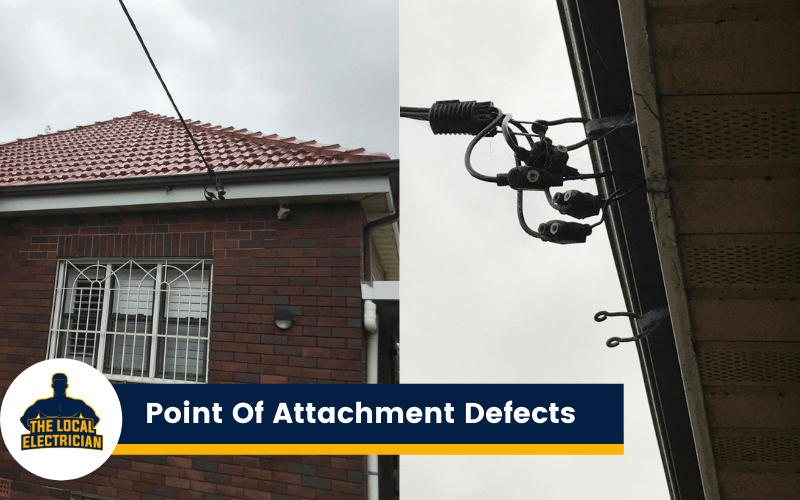
What is an Electrical Defect Notice?
For people who have never heard of an electrical defect notice or have never received, consider yourself lucky.
An electrical defect notice indicates that a homeowner’s electrical system do not comply with the given safety requirements. Typically, the notice explains the problem in the installation. Homeowners will need to contact a level 2 electrician to correct the system. You have up to 21 days to get the defect fixed, after receiving a notice, otherwise the electrical supply will be cut from the home until the needed repairs are made.
There are various reason as to why this type of notice is issued to a homeowner, such as:
Damaged or missing equipment
Problems such as switchboard failure, electrical meltdowns, as well as electrical fires are commonly caused by an electrical system with defective or missing equipment. Some of this missing equipment can be fascia point of attachment brackets.
This is often the reason why notices are issued to homeowners, since this could cause major damages or a large power outage.
Point of attachment problems
When cables are not fully attached or have been frayed due to age, a homeowner will receive an electrical defect notice. This defect notice will clearly specify the next steps a property owner is to take and will identify why the notice has been issue. It is fairly common that when receiving a POA defect notice, you will receiving it for your point of attachment brackets.
This is risky and may cause larger damage if left without repairing. Getting this fixed up as soon as possible will prevent any further damage.
Electrical Switchboards
Switchboards may cause potential danger. If you wish to learn more about switchboards you can read our when to upgrade switchboard article. Typically, a switchboard becomes unsafe to use when the power demands of the property are more than what it can offer. It will end up overheating or fuses will trip due to the sudden rise in power needs. This may also occur if the switchboard is outdated or if you have faulty wiring.
If the switchboard has any of these issues during inspection, an electrical defect notice will be issued to the homeowner. To avoid this from happening, it’s best to upgrade the switchboard to a 3 phase to avoid future troubles.
Overhead cables that hang too low and vegetation interference
There’s a specific height set for overhead cables and power lines according to the NSW government. It’s important to follow these guidelines to ensure public safety.
The minimum height for cables is 4.5 to 5.5 meters. However, it’s also important for a homeowner to keep their vegetation in check by not planting anything near the power pole. The homeowner is responsible for ensuring that trees and the like won’t be in contact with the overhead lines around them. This is to prevent disruption of the cables, as well as sudden bushfires.
What is a Point of Attachment Defect?
The point of attachment refers to where an overhead cable is connected to the property. These typically run from the street’s network to a roof apex, private power pole, fascia board, switchboard or the like. This is what lets power flow from the main network to the property’s source of power.
An electrical defect in the point of attachment is typically caused by improper connection or deterioration of electrical wires. While these may seem like minor problems, it may create greater damage if not acted upon immediately. The possible dangers that may occur range from faulty switchboards to electrical fires due to a major demand in power that is not properly supplied by the source.
The connection can also loosen from the point of attachment due to the cable getting caught in vegetation or by being blown by a strong wind. Checking on the connection’s security by organising annual electrical inspections is one way to prevent it from loosening.
Who You Should Contact to Fix a Point of Attachment Defect?
When the case involves the connection of a network to a property, only a electrician level 2 should be contacted to get the job done.
Since the process of fixing a point of attachment defect involves disconnecting and connecting cables, a general electrician will not be able to do the work. Only a level two electrician is authorised to do electrical connection and disconnection. Whether the point needs to be relocated, removed or even replaced, the work is categorised under electrical level 2 services. The requirement to do this task is typically to call over a L2 electrician. However, it would be best to make sure the electrician who will come over has a Level 2 ASP certification.
By making sure of this, the task will be able to be solved quicker since there would be no need to contact another electrician if the work is too risky. Level 2 ASP electricians are allowed to handle more complex repairs that the typical level 2 electrician is not allowed to. This is because the work may potentially hurt the electricians as well as cause major casualties if not handled the right way.

Sydney’s Point Of Attachment Level 2 Electricians!
For this reason, level 2 ASP electricians have to meet certain qualifications as well as undergo training regularly. This ensures that they are still capable of performing more dangerous tasks, and enhances the skills they already have.
If you are within Sydney and have received a point of attachment defect, contact The Local Electrician. We are a 24 hr emergency electrician that proudly services every Sydney suburb. You can contact us directly on 0439 823 190 or alternatively email us. We look forward to hearing from you soon and helping you with your point of attachment defect today!
Lifetime Warranty on Workmanship and Labor
Our Level 2 Electrical Services
- Private Power Pole Installation: What Sydney Homeowners Need To Know - November 29, 2023
- Understanding Power Outages: When To Call a Level 2 Electrician - November 14, 2023
- Understanding Level 2 Electrical Needs: FAQs for Sydney Homeowners - October 7, 2023
Our Level 2 Local Electrical Services



